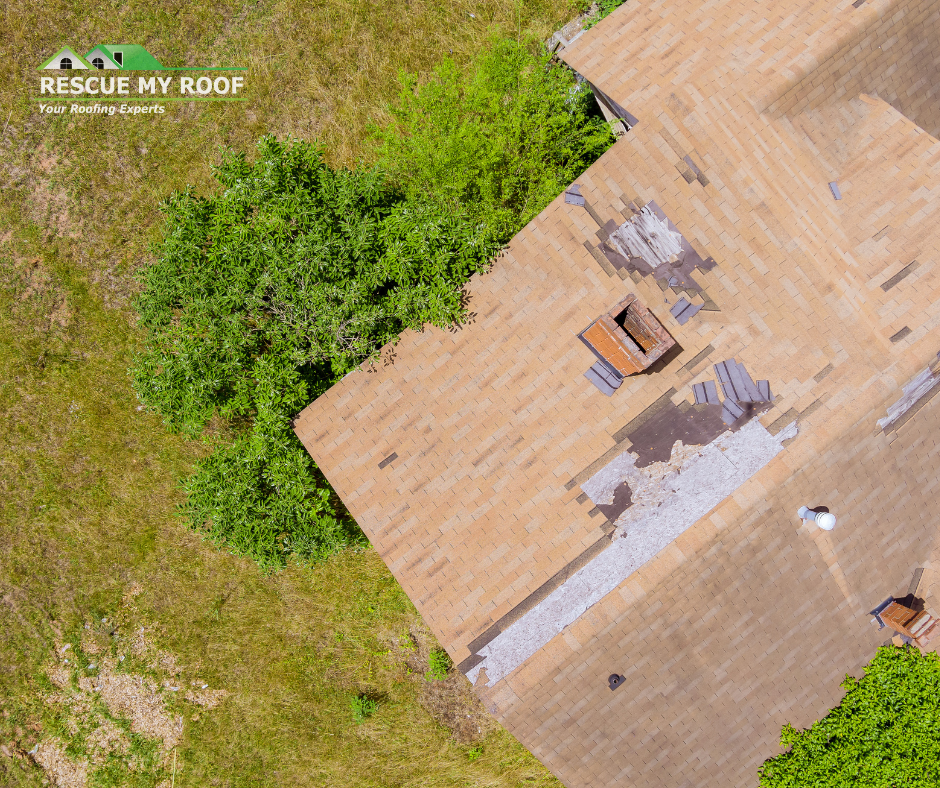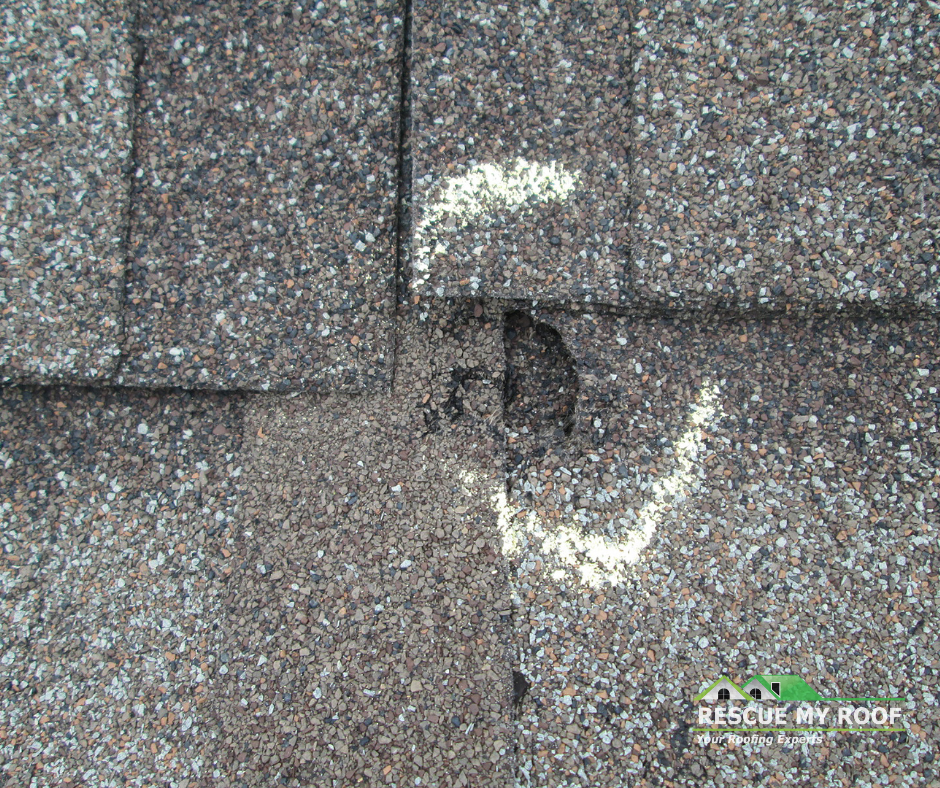Top 8 Signs You Need A Roof Inspection
Your roof, though often out of sight, should never be out of mind. It’s your home’s first line of defense against the elements, and regular inspections are essential to catch potential issues before they become major headaches.
You deserve to feel safe in your home. But a leaking and damaged roof can put a stop to that with a heart-wrenching jolt.
For the past decade, Rescue My Roof has encountered numerous issues like leaks that have put families and their homes at risk. We work with customers daily to ensure that they feel safe in their homes by doing what we do best: teaching property owners about roofing best practices.
As dedicated educators in the roofing industry, we want everyone to feel safe in their homes- regardless of whether they work with us directly.
That is why we’ll explore the top signs that indicate it’s time for a thorough roof inspection. So the next time you recognize an item on this list in your home, you know the steps to take action and make your home secure again.
8 Reasons You Need A Roof Inspection
While active leaks are a great reason to call a professional, they are not the only reason. If you notice any of the eight signs below, it’s time to call a roofing contractor.
1. Old Age
If your roof is approaching or has surpassed its expected lifespan, it’s wise to schedule an inspection. Aging materials may show signs of wear and tear, and proactive assessments can help you plan for necessary repairs or a roof replacement.
Roofs are exposed to weather day and night. They protect your home from severe thunderstorms, wind, hail, and much, much more.
Long-term exposure to the elements can damage a roof, meaning that after 18-22 years, it may have taken all of the damage it can sustain. It is at this stage that many roofs begin to leak.
It’s better safe than sorry. If your roof is older than this range, it is best to seek a professional and schedule a roof estimation appointment.
2. Missing or Damaged Shingles

Visible damage to shingles, such as cracks, curling, or missing pieces, is a clear indicator that your roof needs attention.
Shingles are your roof’s armor, and any compromise can lead to water infiltration and subsequent damage.
3. Water Stains
Water stains on your ceilings are red flags for potential leaks. These stains indicate that water has breached the roofing system, and a thorough inspection is crucial to identify the source and prevent further damage.
Water damage doesn’t just appear as soft spots, sagging, or shingle damage. It can also appear in your attic.
As the water seeps through the shingles and underlayment, it meets the decking – the boards covering the top of your home that the roof’s layers lay upon.
When the decking experiences long-term exposure to moisture, it can begin to darken. You’ll notice a lot of black and brown areas around your attic if this is occurring.
Discoloration doesn’t necessarily mean a total roof replacement. Often, when it is caught early enough, repairs can fix discoloration in the attic. Call an inspector to see the extent of the damage and determine if you may need repairs or a roof replacement.
4. Granule Loss

The shingles that protect the outermost layer of your roof are comprised of granules. These granules are compressed together to form the shingle.
However, over time these granules loosen and fall off of the base of the shingles. It happens bit-by-bit, so it might be years before you begin to notice.
Check your gutters for an accumulation of granules, especially after heavy rain or storms. Granule loss from asphalt shingles is a sign of aging and may compromise the shingles’ ability to protect your home.
5. Clogged or Overflowing Gutters
Clogged gutters can lead to water backing up under the roofline, or overflowing and collecting at your home’s foundation. If you notice overflow during rainfall or see plants growing in your gutters, it’s time for an inspection to assess potential water damage.
6. Sagging or Uneven Roof Lines:
A sagging roof or uneven roof lines are indicative of structural issues that require immediate attention. These signs may suggest weakened supports or water damage within the roof’s structure.
When a roof has faced continuous water damage, the wood underneath the shingles can soften and warp. This often appears as sagging spots on the roof.
As the roof sags, it allows for more standing water to settle on your roof and increases the risk of further water damage. And once too much pressure- from rain or snowfall- accumulates, it can cause that roof area to collapse.
If you notice any sagging or soft spots on your roof, find a reputable roofing company near you to schedule an inspection.
7. Moss or Algae Growth:
The presence of moss or algae on your roof indicates excess moisture, which can lead to decay and compromise the integrity of roofing materials. An inspection will determine the extent of the issue and the necessary remediation.
Because algae needs and retains moisture, this makes it more likely for water to get into your home through your roof. After long-term water exposure, your decking may begin to rot.
Algae can appear as black streaks across your roof. If you notice that algae is beginning to grow, it may indicate that there is further damage. You’ll want to call in a roof inspector to see if the damage is beyond repair and qualifies for a total roof replacement.
8. Visible Damage from Storms or Tree Limbs
If your area has experienced severe weather, inspect your roof for visible damage, including dented or displaced shingles. Falling tree limbs can also cause significant harm and require immediate attention.
Getting A Roof Inspection
If you’ve noticed any of these signs, loose shingles, mold, sagging, or algae growth, the next step would be to call an expert.
Regular roof inspections are a proactive approach to maintaining the health of your home. If you observe any of these signs, don’t delay—schedule a professional inspection to address issues promptly and preserve the longevity of your roof. A little vigilance today can save you from major headaches tomorrow.
Most roofing contractors offer free roof estimation appointments where they can evaluate your roof, assess the damage, and give you a quote.
If you’re still unsure about the process of a roof replacement, you can continue your roofing education journey with “How Much Does A Roof Replacement Cost” and “What To Expect At Your Roof Estimation Appointment.”
Are you looking for an inspection in southeastern Wisconsin? Rescue My Roof is ready to help. Contact us today to get a free estimate.


